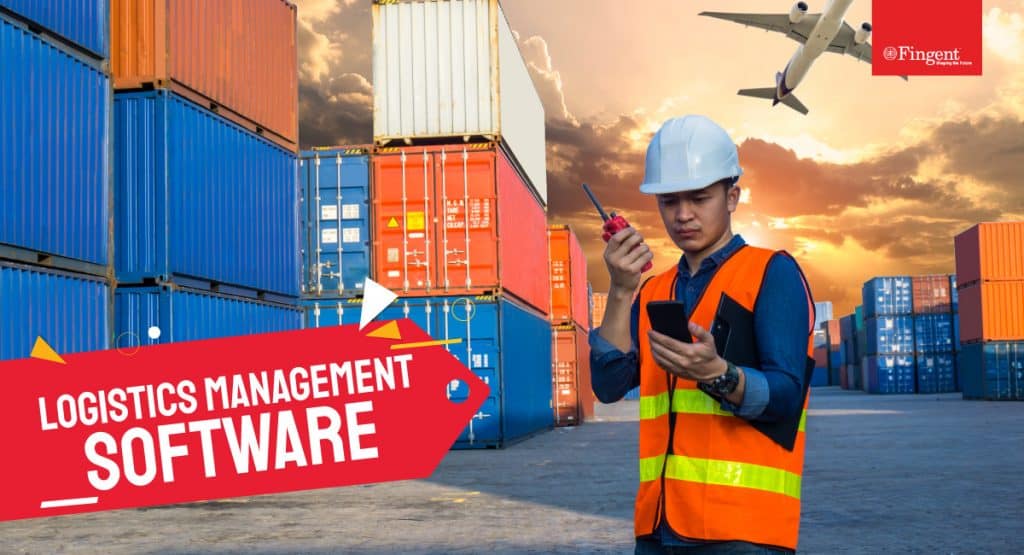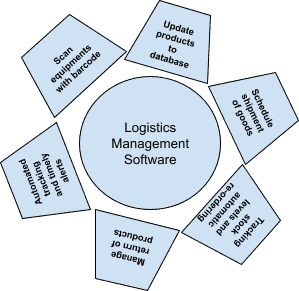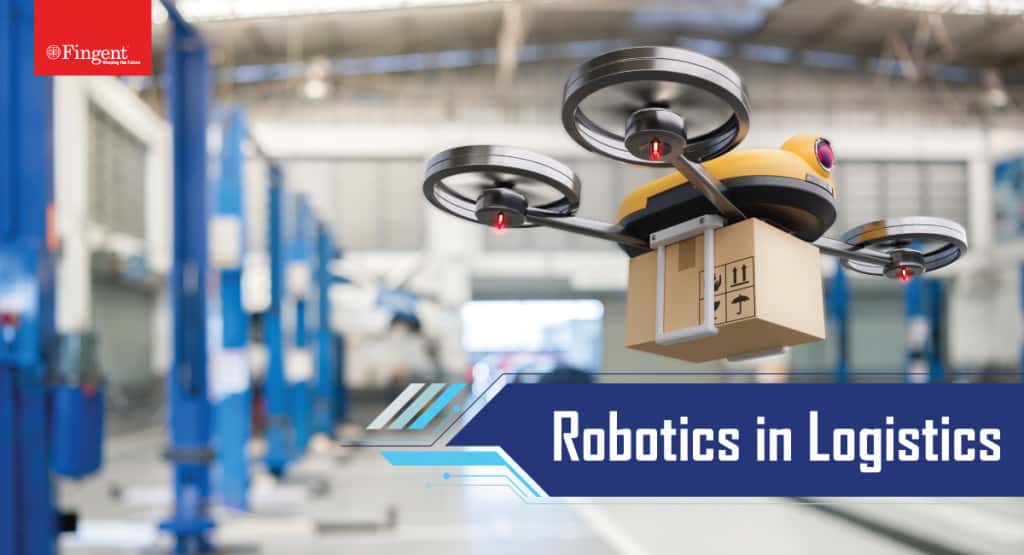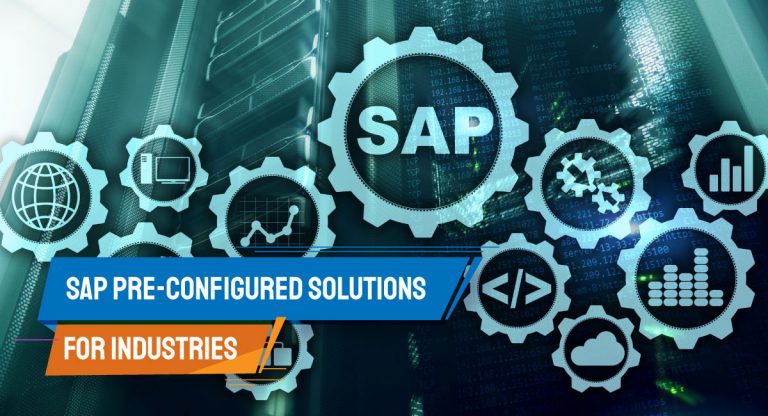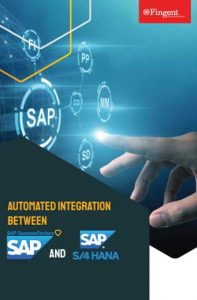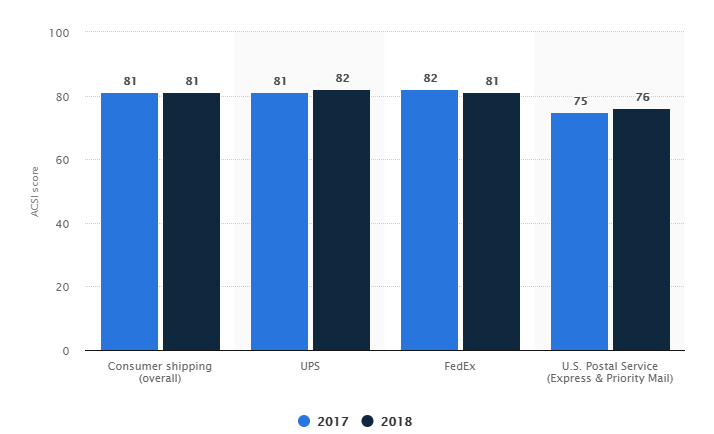Tag: logistics challenges
Supply chain management is a complex web of processes that involve the seamless coordination of procurement, production, distribution, and more. Among these, inventory management stands out as a pivotal aspect that can make or break the entire system.
Maintaining control over inventory is like keeping a careful eye on the pieces of a chessboard. Every move counts, and any miscalculation can have far-reaching consequences. Imagine trying to play chess without knowing the current position of your pieces or your opponent’s – chaos would ensue.
In this blog, we delve into the common challenges faced in supply chain management concerning inventory control and explore the merits of building a custom inventory tracking system to address these issues.
Diving into the Nuts and Bolts: Common Inventory Management Challenges
1. Running Out and Piling Up: The absence of real-time tracking often leads to discrepancies between recorded and actual stock levels. This discrepancy can result in stockouts or overstock situations. Have you ever reached for your favorite snack only to find an empty bag? That’s what a stockout feels like for businesses – missed sales and disappointed customers. On the flip side, having too much inventory is like buying more snacks than you can eat – it leads to unnecessary costs and storage challenges.
2. Data Silos: Traditional inventory systems are often isolated, creating data silos that hinder communication and collaboration across different departments. This lack of cohesion can lead to inefficiencies and errors.
3. Forecasting Difficulties: Accurate demand forecasting is challenging without real-time insights. Businesses often struggle to predict market trends and consumer demands, leading to suboptimal inventory levels and increased holding costs.
4. Manual Processes: Relying on manual processes for inventory management is not only time-consuming but also prone to errors. It is like trying to juggle a dozen eggs without a basket. This can result in discrepancies between recorded and actual inventory levels, leading to operational inefficiencies.
5. Lack of Scalability: Many off-the-shelf inventory management solutions may lack the flexibility needed to adapt to the unique demands of a growing business. This lack of scalability can hinder long-term success.
How Can an Inventory Tracking System Help?
A custom inventory tracking system serves as a key strategic tool, providing businesses with a competitive edge in managing inventory complexities. Let’s now explore the concrete benefits of implementing such a system and its targeted solutions to common supply chain challenges.
1. Real-time Visibility:
An effective inventory tracking system grants you real-time visibility into your stock levels. This transparency enables timely decision-making, reducing the risk of stockouts or overstock situations. By knowing exactly what is in your inventory at any given moment, you can optimize stocking levels and respond swiftly to changes in demand.
2. Cost Savings:
A well-designed tracking system allows you to minimize carrying costs by preventing excess inventory buildup. By optimizing stock levels and improving order accuracy, you can reduce holding costs, warehouse space requirements, and the costs associated with expedited shipping due to stockouts.
3. Enhanced Accuracy:
Manual tracking methods are prone to errors, leading to discrepancies in stock levels and financial records. An automated inventory tracking system eliminates human errors, ensuring accuracy in your records. This not only improves financial reporting but also builds trust with your customers and stakeholders.
4. Efficient Order Fulfillment:
An inventory tracking system streamlines the order fulfillment process by providing insights into available stock, order status, and delivery timelines. This efficiency contributes to a positive customer experience and strengthens your business reputation.
Read more: Warehouse Management System: Business Applications and Case Studies.
Challenges Addressed by a Custom Inventory Tracking System
1. Stockouts and Overstock Situations
Challenge: Unplanned stockouts or excessive inventory can cripple operations and strain relationships with clients.
Solution: Real-time visibility allows for proactive inventory management, preventing stockouts and overstock situations. The system sends alerts when stock levels approach predefined thresholds, empowering you to take preventive action.
2. Manual Errors in Tracking:
Challenge: Manual tracking methods are prone to human errors, leading to discrepancies in records and financial reporting.
Solution: Automation eradicates the potential for errors, ensuring accuracy in tracking and reporting. This not only saves time spent on rectifying mistakes but also builds trust with stakeholders.
3. Inefficient Order Fulfillment:
Challenge: Slow and inaccurate order fulfillment can result in dissatisfied customers and harm your brand reputation.
Solution: An inventory tracking system provides real-time insights into stock levels, enabling efficient order processing. This leads to faster order fulfillment, improved customer satisfaction, and a competitive edge.
4. Lack of Data-Driven Decision Making:
Challenge: Without real-time data, decision-makers are forced to rely on intuition rather than insights.
Solution: The system’s data analytics capabilities empower decision-makers with actionable insights. This data-driven approach facilitates strategic decision-making and allows for quicker adaptations to market changes.
The Case for Custom Inventory Tracking
In supply chain management, precision and efficiency are vital for success. Off-the-shelf solutions may appear attractive, but investing in a custom inventory tracking system is a strategic imperative. Here’s why:
1. Precision Aligned with Your Unique Needs: Off-the-shelf solutions lack specificity, designed for a broad audience. A custom system is tailored to your unique operations, ensuring seamless alignment with your processes, from order fulfillment to warehouse management.
2. Real-Time Adaptability: Custom solutions offer real-time adaptability to changing market conditions, technological advancements, and industry standards. This agility ensures you stay ahead without being confined by pre-set functionalities.
3. Cost-Effective Scalability: Off-the-shelf solutions often come with unnecessary features or limitations, hindering growth. Custom inventory tracking systems offer scalable, cost-effective solutions, allowing you to expand or modify functionalities without unnecessary overheads as your business evolves.
4. Seamless Integration: A custom solution ensures seamless integration with your existing suite of tools, from ERP to CRM systems. This creates a unified ecosystem, optimizing workflow, enhancing data accuracy, and improving overall operational efficiency.
5. Enhanced Security: Generic systems employ a one-size-fits-all security approach, leaving businesses vulnerable. A custom inventory tracking system enables personalized security measures, safeguarding sensitive data and mitigating risks specific to your industry and operations.
6. Maximized User Adoption: The effectiveness of a system hinges on its user adoption rate. Custom solutions prioritize user experience, aligning interfaces with your team’s familiarity. This minimizes training requirements, facilitating a smooth transition and maximizing the efficiency of your inventory management system.
7. Tailored Reporting for Decision-Making: Unlike pre-packaged systems, a custom inventory tracking system allows you to tailor reporting functionalities. It ensures the data you receive is not just comprehensive but directly aligns with your business goals, providing precise insights for strategic decision-making.
Elevate Your Supply Chain with Fingent’s Custom Inventory Tracking Solutions
At Fingent, we’re your dedicated partner for supply chain excellence, specializing in crafting tailored inventory tracking systems. Our solutions seamlessly adapt in real-time, ensuring agility in dynamic market landscapes. With a focus on scalability without unnecessary costs, we seamlessly integrate with your systems for enhanced efficiency. Leverage our expertise in custom reporting for actionable insights, backed by a proven track record in diverse industries. Partner with Fingent for precise, adaptable, and scalable supply chain solutions.
Get in touch with us, and let’s talk.
SAP helps increase warehouse management productivity with voice picking!
Voice technology has been there for a while and is here to stay. Its increasing adoption among warehouse distribution centers has led to increased accuracy, improved productivity, and training time reduction. Supply chain executives report attaining a 50% decrease in picking errors and a typical ROI in less than one year with voice integration.
In retail warehouses, complex facilities such as inventory control are vital, with several picks to be performed every hour. The warehouse employees should be an efficient and accurate while ‘picking’ as wrong picking can lead to incorrect deliveries and affect customer satisfaction.
To improve staff accuracy and speed of pick, warehouses can consider “Voice Picking” technology. Voice picking is an extension of the Warehouse Management System (enhanced by additional software and hardware) that allows transferring instructions to the warehouse operators using earphones and microphones. Voice Picking uses a wearable computer that includes a headset and microphone so that the order pickers can be instructed on what items to pick from where and later confirm their actions verbally into the Warehouse Management System (WMS).
Read more: How Robotics in Logistics Helps Improve Supply Chain Efficiency
Benefits of Voice-picking
A voice-picking system creates a hands-free, heads-up workflow. Unlike the traditional warehouse order picking, where you need to stop to read, scan, or punch keys, the voice-picking system allows users to listen and speak efficiently. Some of its benefits include:
- Productivity improvement
- Reduction in errors by 25% or more
- Decrease in accidents as operators rely on eyes and hands-free technology and hence are more aware of the surroundings
- Cuts training time
How is voice-enabled warehouse operation helping during the COVID-19 pandemic?
In the last few months, warehousing and logistics have been hit hard. While there was enormous pressure on the warehouse to execute deliveries quickly due to increasing customer expectations, COVID-19 has caused further disruption.
Logistic companies have had to evaluate options and make changes across transportation modes, considering delays, interruptions, and price changes.
According to a survey from August to September 2020, about 32,200 jobs were added to the warehouse and storage sector. Thanks to voice and device technology! Voice integration helped address the labor shortage and equipped new workers. Here are a few benefits of voice-enabled warehouse management.
1. Efficient onboarding
New workers can pick up their barcode scanner or mobile device and begin their work with minimal onboarding time. Latest device upgrades offer improved designs and user-friendly interfaces. Whether a Windows 10, iOS, or Android device, workers can choose the device they like. This flexibility helps simplify the training and onboarding process of new workers, optimizing workforce management, and making it a more efficient experience.
New workers can get started quickly without the need for lengthy training processes. With voice-enabled applications, you can reduce the training time from several hours to just a few minutes.
2. Increased productivity
Voice capabilities are helping workers to keep pace with the high volume of orders. It helps them cope with the increased pressure to meet soaring demands, reduce training time, and use the hand-held devices of their comfort.
3. Higher accuracy
With hands-free wearables and voice picking, workers don’t need to stop frequently to check their devices. It will reduce errors and allow pickers to complete more orders within the same timeframe with improved speed and accuracy.
4. Improved safety
The coronavirus has made “contactless” mandatory. Voice picking can eliminate many physical touchpoints that can lead to virus exposure. Minimizing surface contact is one of the best ways to protect warehouse workers.
Read more: Contactless services: The new retail norm
How does SAP help voice-picking?
SAP’s open architecture supports several voice integration methods that help users achieve immense productivity and accuracy. If your business is running on SAP’s Extended Warehouse Management (EWM) solution or Warehouse Management (WM), voice can be easily integrated. It results in the seamless integration of ERP with your warehouse management solutions and voice. Ultimately, the accuracy, productivity, comfort, and safety of all your warehouse processes will improve. It helps distribution centers deliver on time, achieve deadlines, and scale.
Read more: SAP Preconfigured Solutions Boost Efficiency Among Industries
Today, voice integrated into SAP has become an essential tool for many businesses. SAP’s voice picking provides superior ergonomics, eliminates distractions, and allows users to focus on the task. The voice technology is specifically designed to provide voice recognition in noisy environments. The noise cancellation ability helps lower warehouse background noise, such as truck horns, pallet drops, and conveyor system mechanism.
Additionally, the technology helps overcome language barriers as most systems come in more than 40 languages allowing users to interact with SAP most naturally and effectively.
Voice with SAP can quickly scale with your business both when your business grows and when you need to accomplish seasonal peaks. With SAP’s explicit instructions, you can add new employees’ onboarding time and capacity without any complex changes to the given infrastructure.
Download Our Case Study: How Fingent automated integration between SAP SuccessFactors and SAP S/4HANA
To conclude
As the economy battles to overcome uncertainty, using safe, cost-effective solutions, embracing advanced technologies like voice-enabled applications are imperative to sustain. Additionally, with COVID-19 showing no signs of ending soon and the world shifting to contactless shopping, embracing voice-enabled applications makes sense from an economic and physical safety standpoint.
No other technology has impacted the logistics and shipping industry like voice in the recent past. Extend your logistics and fulfillment processes by making voice technology a vital ingredient of your company’s IT strategy. Contact us now to get started.
Top Challenges Logistics Managers Face Everyday
In the present scenario of global economics, logistics play a key role in facilitating trade and, by extension, ensuring the success of business operations. However, changing consumer demands, complex business models and growing client demands are just some of the top factors that pose a challenge in streamlining logistics management. So, how can logistics management personalize a conventionally standard service? Well, that is perhaps the top challenge that the industry has been facing in the last few years among others.
In their struggle to ensure optimum results, here are the top challenges faced by logistics managers today:
-
Cutting Transportation Costs
Growing fuel prices increased wages, and peaking inflation indexes all work in tandem to increase transportation costs daily. Cutting a few corners here and there does not always help in meeting the cost-cutting goals for transportation. Adopting a strategic approach to eliminate or reduce bottlenecks can prove pivotal in revamping network designs and consequently cutting down on transportation costs. 
Related Reading: Take a look at how a Transportation Management System can ease out the challenges of a 3rd party logistics service provider here
-
Processing Enormous Amounts of Information
Logistics managers have to deal with a lot of figures and data on a daily basis, besides coordinating smooth discharge of operations. The scope of their work includes ensuring the safety of the fleet and staff, fleet loading, cross-checking route maps, sanctioning fuel bills and so on. When done manually, this can be a time-consuming and tedious task that can take your focus off from attention to details. Investing in an automated solution or application for data entries, fuel bills, loading and unloading ledgers can go a long way in streamlining operations by allowing logistics managers the luxury of time to look at the finer nuances of operations.
-
Offering Segmented, Customized Services
Thanks to globalization, logistics management is turning into a multi-layered job where managers are expected to keep tabs on multiple supply chains simultaneously. You don’t just need to deliver goods on time but also offer customized services to different suppliers and customers in terms of packages and pricing. With the increase in customer expectation, some top rated shipping companies are striving to consistently provide maximum consumer satisfaction. A study by statista shows the 2017 and 2018 American customer satisfaction index (ASCI) scores for consumer shipping companies in the United States.
The keyword for success in this scenario is flexibility. Logistics operators need to offer personalized experiences to multiple segments of customers. Using a logistics management software that can automate the process of projecting different services to different customers can not only save time and effort on the managerial level but also bring added accuracy to data compilation and compliance.
Related Case Study: A constantly growing market like logistics cannot be managed only from a single device. How mobility solutions can ease logistics management and reduce its challenges is a read worthwhile. Find out more on iOS and Android development for logistics and supply chain company.
-
Manpower Management
Manpower is the trickiest of management responsibilities. You must maintain a humane approach toward the employees while keeping the best interest of your organization in mind. That can be a complicated equation in any managerial setup, but especially so in case of logistics management, as the drivers and staff are often placed in different geographic locations to maintain swift supply chain velocity. Decentralization of responsibilities, by appointing logistics managers in key locations, with appropriate work-order management solutions can help in more efficient management. For instance, work order software like ReachOut, helps logistics managers manage team utilization, team schedules, show proof of work, generate quotes and invoices and do much more. Managers can easily keep everyone on the same page and notify the staffs immediately about changes or provide them with live info they need.
The future of supply chain management How will technology and AI shape tomorrow [Source: University of Liverpool Online]
-
Compliance with Regulations
Transportation rules, regulations and security norms can vary from city to city, state to state, and quite obviously, from country to country. If you are a business catering to a global clientele, keeping up with these varying rules and regulations and familiarizing your staff with these, can pose a grave challenge. Collaborating with an efficient audit software can help eliminate these pains and improve your compliance, audit results and lead to quality investigations, thereby saving you from the trouble of getting on the wrong side of the law.
With the landscape of business operations continually changing, there is a shift in the ensuing challenges as well. Staying abreast with these changes and taking preemptive measure to ward off these challenges, is a sign of sound logistics management. However, solving logistic issues is not an impossible mission. Focusing on 3 major factors- Data, Process and Technology, can solve the biggest challenges of logistics.
To leverage cutting-edge technology and achieve efficient logistics solutions tailored to your needs, partner with Fingent, the leading custom software development company. Unlock the power of cutting-edge technology and elevate your logistic solutions to new heights. Reach out to us today for an unparalleled experience of promptness and precision.

